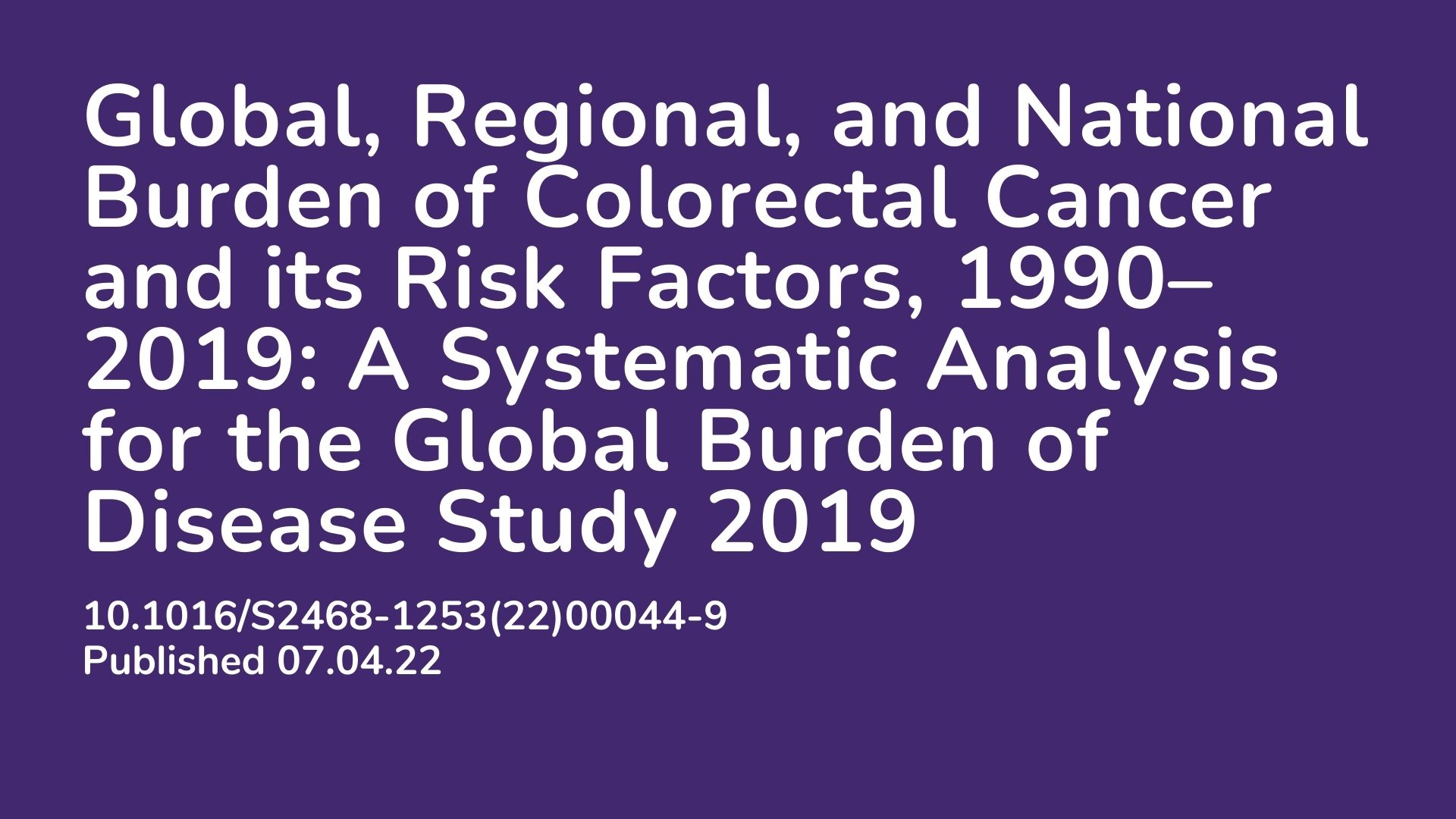Summary: This paper is an analysis of 30 years of colorectal cancer trends and risk factors, from 204 countries. The findings show that globally, colorectcal cancer incidence more than doubled between 1990 and 2019. Colorectal cancer incidence also drastically rose in middle socio-demographic index (SDI) countries, as well as in people aged 20-49 years in high SDI countries.Whilst further research is needed to understand the exact cause of colorectal cancer in young adults, the main risk factors have been identified as obesity, sedentary lifestyle, low calcium intake, alcohol consumption, smoking, and an altered gut microbiome. This analysis has shon light on a very important potential gap in the we approach cancer screening – considering that in Australia and many other countries the bowel cancer screening test is for those above the age of 50, there may need to be a global reconsideration of screening recommendations to include younger age groups.
Abstract:
Background: Colorectal cancer is the third leading cause of cancer deaths worldwide. Given the recent increasing trends in colorectal cancer incidence globally, up-to-date information on the colorectal cancer burden could guide screening, early detection, and treatment strategies, and help effectively allocate resources. We examined the temporal patterns of the global, regional, and national burden of colorectal cancer and its risk factors in 204 countries and territories across the past three decades.
Methods: Estimates of incidence, mortality, and disability-adjusted life years (DALYs) for colorectal cancer were generated as a part of the Global Burden of Diseases, Injuries and Risk Factors Study (GBD) 2019 by age, sex, and geographical location for the period 1990-2019. Mortality estimates were produced using the cause of death ensemble model. We also calculated DALYs attributable to risk factors that had evidence of causation with colorectal cancer.
Findings: Globally, between 1990 and 2019, colorectal cancer incident cases more than doubled, from 842 098 (95% uncertainty interval [UI] 810 408-868 574) to 2·17 million (2·00-2·34), and deaths increased from 518 126 (493 682-537 877) to 1·09 million (1·02-1·15). The global age-standardised incidence rate increased from 22·2 (95% UI 21·3-23·0) per 100 000 to 26·7 (24·6-28·9) per 100 000, whereas the age-standardised mortality rate decreased from 14·3 (13·5-14·9) per 100 000 to 13·7 (12·6-14·5) per 100 000 and the age-standardised DALY rate decreased from 308·5 (294·7-320·7) per 100 000 to 295·5 (275·2-313·0) per 100 000 from 1990 through 2019. Taiwan (province of China; 62·0 [48·9-80·0] per 100 000), Monaco (60·7 [48·5-73·6] per 100 000), and Andorra (56·6 [42·8-71·9] per 100 000) had the highest age-standardised incidence rates, while Greenland (31·4 [26·0-37·1] per 100 000), Brunei (30·3 [26·6-34·1] per 100 000), and Hungary (28·6 [23·6-34·0] per 100 000) had the highest age-standardised mortality rates. From 1990 through 2019, a substantial rise in incidence rates was observed in younger adults (age <50 years), particularly in high Socio-demographic Index (SDI) countries. Globally, a diet low in milk (15·6%), smoking (13·3%), a diet low in calcium (12·9%), and alcohol use (9·9%) were the main contributors to colorectal cancer DALYs in 2019.
Interpretation: The increase in incidence rates in people younger than 50 years requires vigilance from researchers, clinicians, and policy makers and a possible reconsideration of screening guidelines. The fast-rising burden in low SDI and middle SDI countries in Asia and Africa calls for colorectal cancer prevention approaches, greater awareness, and cost-effective screening and therapeutic options in these regions.
Article Publication Date: 07.04.22
DOI: 10.1016/S2468-1253(22)00044-9



